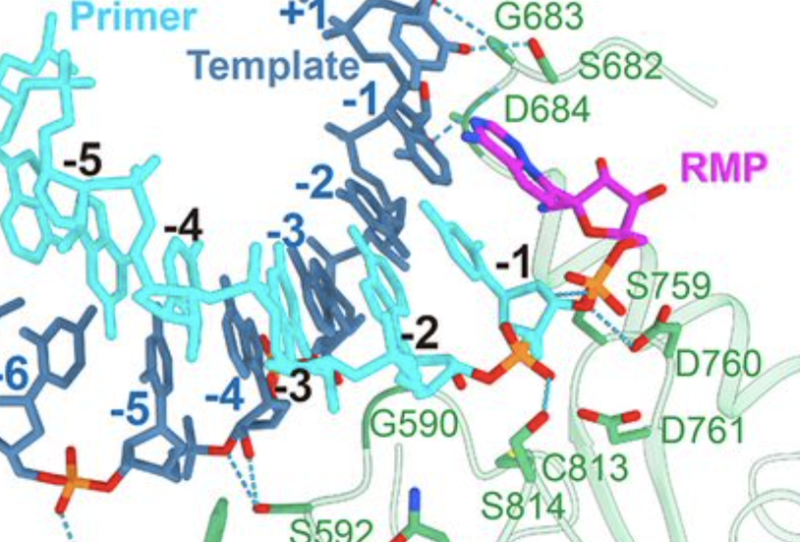First drug known to work against SARS-CoV-2 imaged in action

Enlarge / The RNA being copied is in dark blue; the copy is in turquoise; the enzyme is in pale green; and the drug is in pink.
Just this week, we had the first promising report of a drug that appears to improve the recovery time of patients suffering from COVID-19. Hot on the heels of that announcement, a scientific journal has released a paper that describes how the drug interferes with the virus. While there's no real surprises in what has been revealed, it provides key details of how SARS-CoV-2 can be blocked.
Copying machineTargeting a virus with a drug is a challenge. Viruses make their living by using their host's proteins to do most of the work of making new viruses. That means a drug has to target some of the few proteins encoded by the virus while not interfering with any of the far more prevalent host cell proteins. In the case of the coronavirus, biologists have identified a number of distinct features of the virus that may be targeted without an obvious risk of causing severe side effects.
Remdesivir, which saw a large clinical trial produce promising results, is a drug that's designed to target one of these virus-specific vulnerabilities. The coronavirus genome is encoded using the chemical RNA, as opposed to the DNA used for our genome. In fact, there's nothing about our cells that requires them to make an RNA copy of an RNA molecule. As a result, the coronavirus genome encodes proteins that do this RNA-to-RNA copying, called an RNA-dependent RNA polymerase. Remdesivir was designed to look like one of the building blocks of RNA in the hope that it would bind to an RNA virus' polymerase and inhibit it.
Read 12 remaining paragraphs | Comments